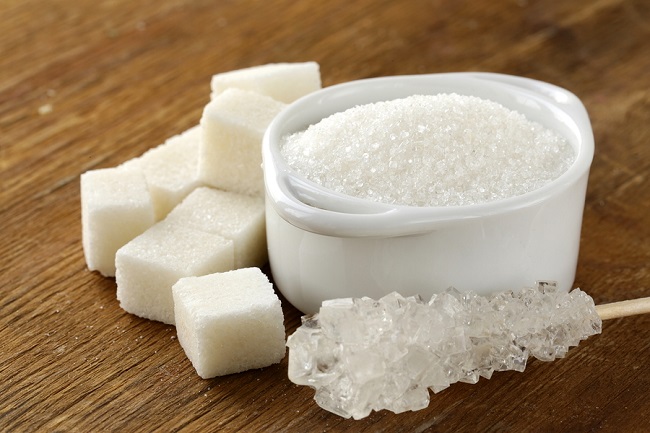- Make It Yourself Lavender Heart-Shaped Bath Bombs!
- 20 Things You Never Knew About “Down There”
- 12 Best Foods For Those Suffering From Arthritis Pain
- 12 Personal Hygiene Mistakes Almost Everyone Makes (Mom Never Told You About #4!)
- 15 Medicinal Plants And Herbs From The Cherokee People
- 12 Mind-Blowing Benefits Of Drinking Coconut Water During Pregnancy
- 12 Outstanding Winter Foods That Won’t Fatten You Up Like A Christmas Turkey
Life After Antibiotics: 5 Ways to Restore Your Digestive Health

Photo credit: bigstock
Although the contamination of our food supply through the use of antibiotics is deplorable, sometimes we need to take antibiotics ourselves as a live saving measure. Antibiotics really can be wonderful tools. They kill many of the infectious diseases that killed our grandparent’s generation.
Unfortunately, one of their side effects is that antibiotics are not choosy when it comes to killing bacteria. They simply kill everything, good and bad, in their path. This means all that beneficial bacteria in your gut is killed right along with the bad.
At any given time you have perhaps 1,000 trillion bacteria living within our digestive systems, so they need to be kept in balance in order for us to be healthy. The toxins that are made by an imbalance of these bacteria lead to leaky guy syndrome and chronic inflammation.
When we finish taking a broad spectrum antibiotic we need to replenish the good bacteria in our digestive system as soon as we can. We need those good bacteria to do its daily work and maintain the delicate balance between bacteria and fungi. Candida is a very opportunistic little stinker, and it’s just waiting for the right opportunity to mass produce itself and eventually wreak havoc on our bodies.
Take a look at the 5 easy ways you can restore your digestive bacteria back to its normal healthy levels after a course of antibiotics.
1. Encourage Good Bacteria to Multiply
Even the most intense round of antibiotics didn’t kill all your good bacteria, so encourage them to grow and multiply. Eat plenty of prebiotics. This means organic, raw fruits and vegetables. The insoluble fiber give them a solid foundation on which to multiply while it provides them with the food they need to grow. Eat at least one big salad every day and a wide variety of vegetables. For the best health, 80 percent of your diet should be eating raw vegetables and fruits. (Eat more veggies than fruits). This type of diet after a course of antibiotics is essential for the restoration of your good bacteria. Find out 5 ways to eat organic on a budget.
2. Make Bone Broth Soups
Your mother or grandmother probably made you homemade chicken soup from a leftover chicken carcass when you were young and had a cold or the flu. She told you that it would help you to get better quickly and guess what? She was right. Soup made with real bones adds minerals and amino acids into the body. Studies show that there is a strong link between glutamine, and the repair of the lining of the gut. So let your family finish off that roast chicken, then make a big batch of bone based soup, add plenty of organic vegetables, and you are off to a great start towards repairing your gut bacteria.
Continue to Page 2

Photo credit: bigstock
3. Avoid Sugar
Processed sugar, we mean. Bad bacteria, Candida, as well as cancer cells, feed off sugar. This means you should avoid all processed foods, sodas, heavy starches, and artificial anything (Read more about foods that hide sugar). Pure stevia is alright, as are a few of the more natural sugars such as raw honey, fruit, and coconut and date sugar. However, it’s better if you can even avoid those for a few weeks after you finish your course of antibiotics. This is the time to eat as perfect a diet as you possibly can.
4. Eat Fermented Foods
This means it’s time to eat plenty of those homemade dishes like sauerkraut, kombucha, coconut kefir, kimchi, sour cream, chutneys, buttermilk, and pickles. These types of fermented foods provide live bacteria right into your gut directly, along with some much needed enzymes. Supplements can help, too, but the acid in our stomachs kill most supplements, so it’s better to eat the whole food, rather than rely on supplements.
SEE ALSO: 7 Amazing Foods that Do Wonderful Things for Your Digestion
5. Eat Probiotics
This is a great way to help repopulate your digestive system with good bacteria. Probiotics are foods or supplements that are filled with beneficial bacteria. Most people get these through yogurt. Don’t choose the sugar and fruit filled commercial types of yogurt, as it can do you more harm than good. Make your own probiotic yogurt at home in a yogurt maker or be sure you are buying no sugar added, healthy probiotic filled yogurt. Again, our stomach acid tends to kill off a lot of these good bacteria, so be sure to eat plenty of them.
(By the way, if you’re enjoying this article, you may want to subscribe to the Naturalon’s free newsletter; get breaking news alerts on GMO’s, fluoride, superfoods, natural cures and more… You privacy is protected. Unsubscribe at any time.)
































